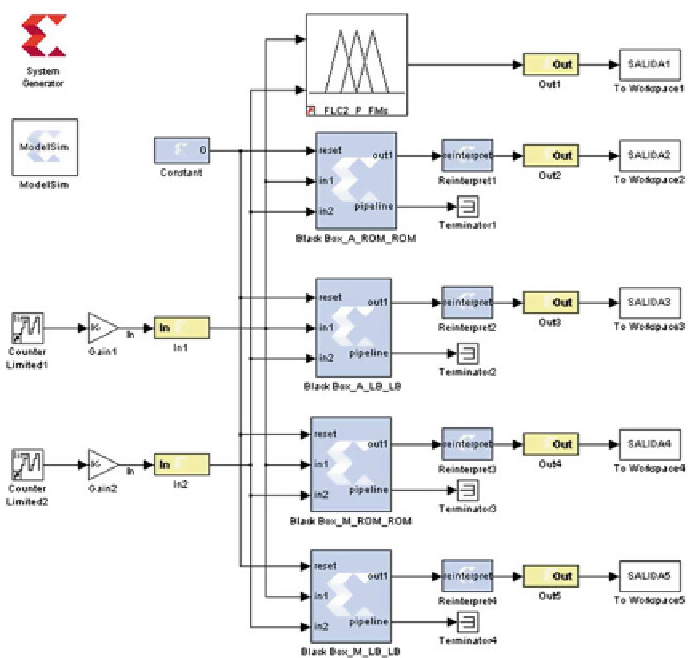Information Technology Reference
In-Depth Information
Fig. 13.8
Simulink model used to compare the functions in Fig.
13.7
versus the output of five fuzzy
controllers generated by the synthesis design tools provided by
Xfuzzy
: XSG-based controller (
top
)
and VHDL-based controllers with arithmetic- (A) and memory-based (M) MFCs and knowledge
base implemented as memory (ROM) or logic blocks (LB)
systems using defuzzification methods with a higher number of parameters provide a
better approximation. Systems using simplified versions of Fuzzy Mean and Takagi-
Sugeno methods provide better results than their complete counterparts because they
avoid errors introduced by the final division stage.
Finally, the influence of the number of bits used to codify the parameters can be
analyzed from Table
13.3
, which gathers values of MSE obtained when comparing
function
F
3
versus the output of fuzzy controllers with different architectural options
and bit size. Systems using Weighted Fuzzy Mean as defuzzifier, seven membership
functions in the antecedents and five in the consequent have been chosen in this
case. Logically, the error decreases when more bits are employed to implement the
fixed-point arithmetic used by the fuzzy controllers. This diminution is appreciable
for low bit sizes, but it is less significant for 10 or more bits (when the error due to
the fuzzy logic approximation is the main contribution to the global error).

Search WWH ::

Custom Search